Sir Alexander MacCormick KCMG 1856 - 1947
Surgeon and benefactor
Sir Alexander MacCormick was a pioneering and highly regarded surgeon who came to Australia in 1883 to join the University of Sydney's new medical school. From 1910 he operated The Terraces private hospital at 2 Cooper Street, Paddington which he donated to The Presbyterian Church in 1926 - it became known as The Scottish Hospital. He was made a Knight Grand Cross of the Order of St Michael and St George (KCMG) (Imperial) in 1926 for his work as a surgeon. MacCormick had a passion for the sea, and in his spare time was a notable yachtsman.
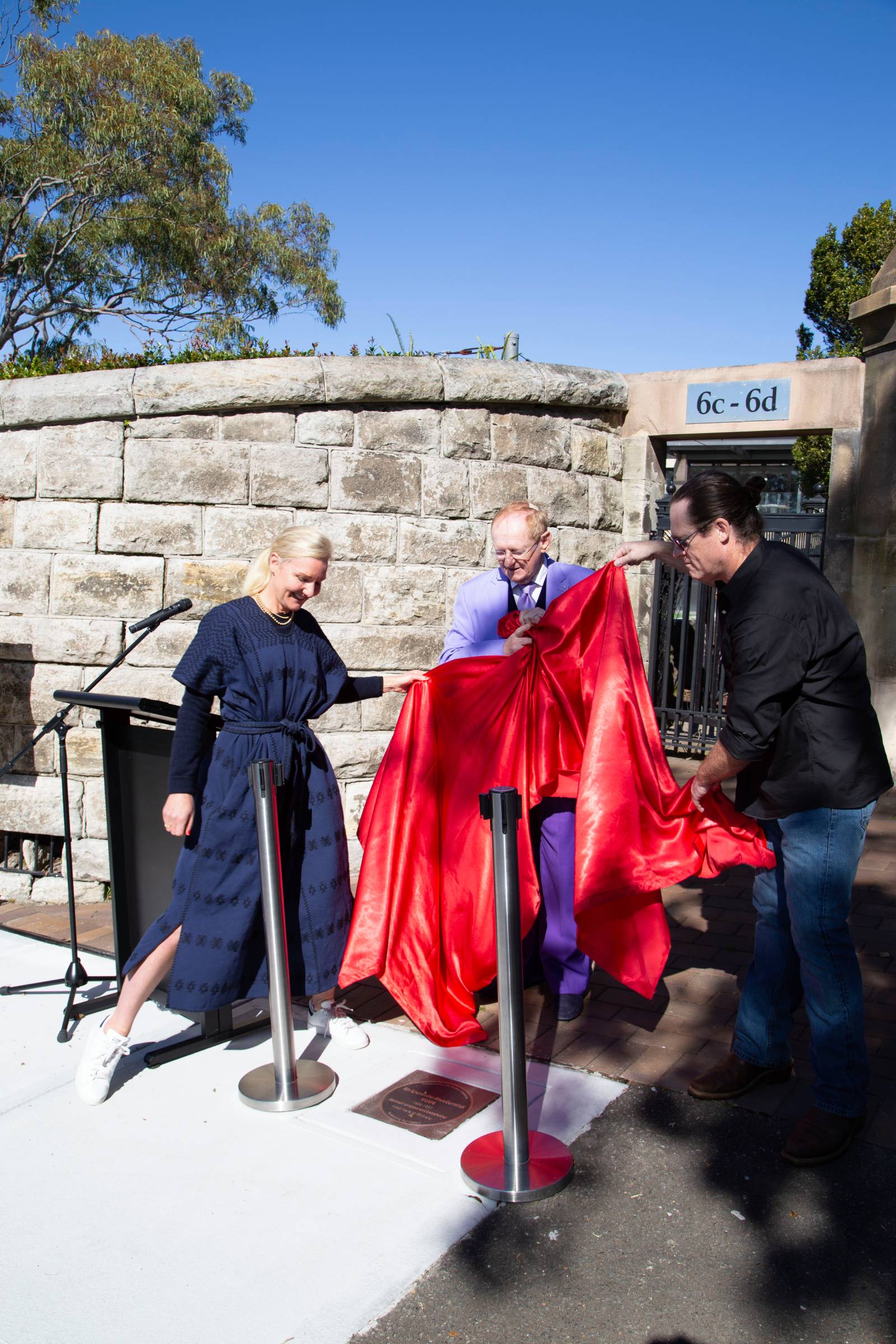
Plaque unveiling for Sir Alexander MacCormick KCMG at 'Kilmory', 6 Wentworth Street, Point Piper, 29 July 2022. Fiona Austin - Sir MacCormick's great grandaughter, Cr Peter Cavanagh and Erin Free (nominator)
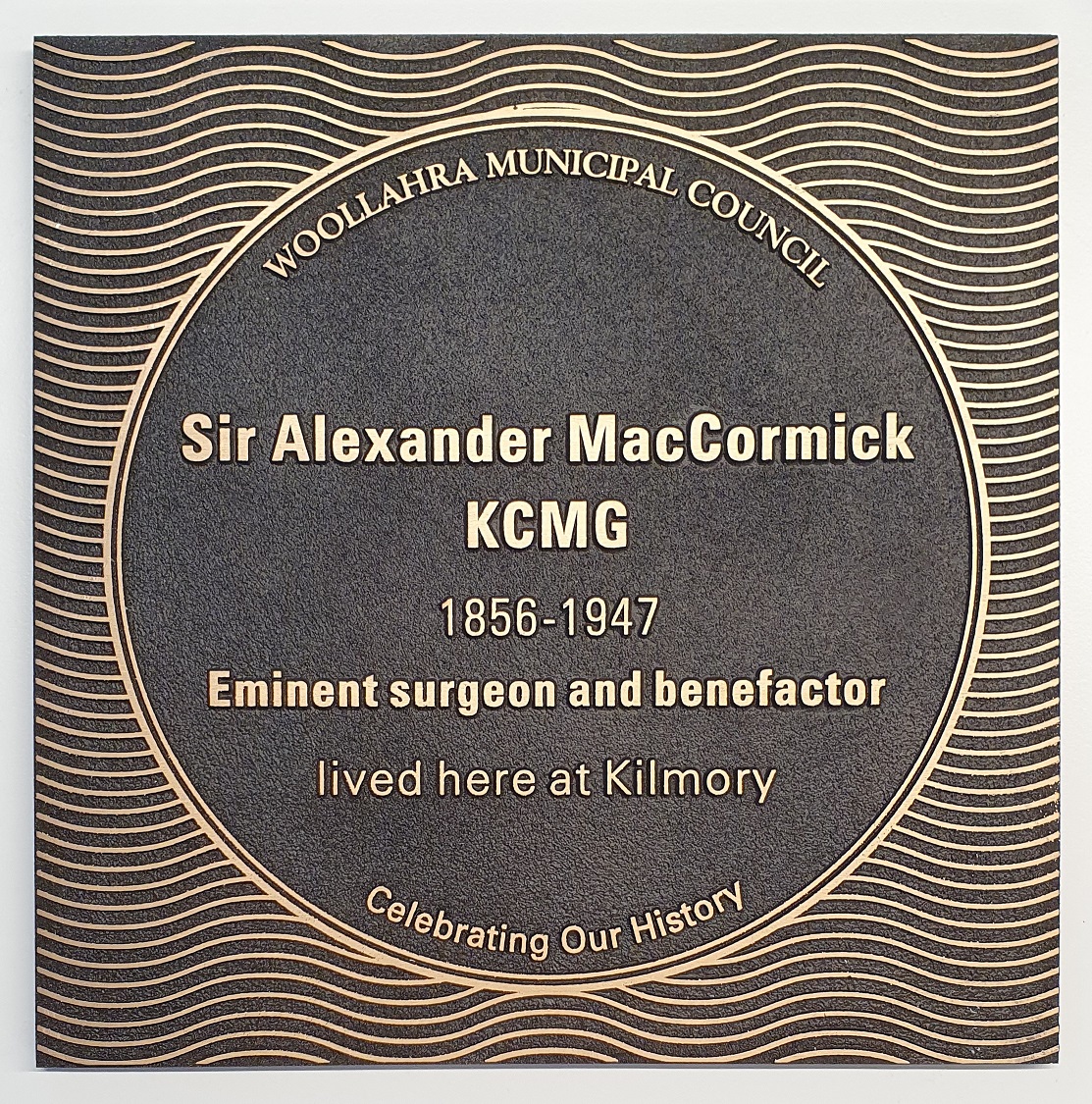
On 29th July, 2022, a plaque to commemorate the life and work of Sir Alexander MacCormick was unveiled at 'Kilmory', 6 Wentworth Street, Point Piper, the home he built c1914.
Gallery
Sir Alexander MacCormick KCMG
Surgeon and benefactor
31 July 1856 - 25 October 1947
Sir Alexander MacCormick (1856-1947) was a highly regarded surgeon said to have influenced the ‘high standard of Australian surgery’ throughout his career, until his retirement in 1931. He operated The Terraces private hospital at 2 Cooper Street, Paddington and donated it to The Presbyterian Church in 1926 - it became known as The Scottish Hospital.
Alexander MacCormick was born on 31 July, 1856 at North Knapdale, Argyll, in the west of Scotland, youngest son of Archibald MacCormick, a farmer and ship master1, and his wife Mary (née Campbell). The Scottish census of 1861 revealed a large household in North Knapdale on a 70 acre farm, including Archibald, Mary, Alexander (then aged 4), along with three older brothers, three sisters, and two female servants2. Alexander’s boyhood home was set in a landscape of sea lochs and the islands of the Inner Hebrides, possibly the genesis of his lifelong love of the sea. He attended school in nearby Lochgilphead.
Alexander studied medicine at the University of Edinburgh, completing his studies in 1880 (MB ChM) in the same class as Thomas Anderson Stuart, Robert Scot Skirving, and Arthur Conan Doyle, and obtained his MRCS3 in 1881. By 1881, Alexander was in lodgings in Edinburgh, his occupation recorded in the 1881 census as ‘Assistant to Professor of Physiology Edinburgh University’4. He then spent a year in Liverpool where he worked as a house surgeon to E R Bickersteth, one of the first surgeons to adopt Lister’s antiseptic methods. Scot Skirving noted in his memoirs that 'MacCormick was much influenced in every professional way by the Liverpool school of surgery'.
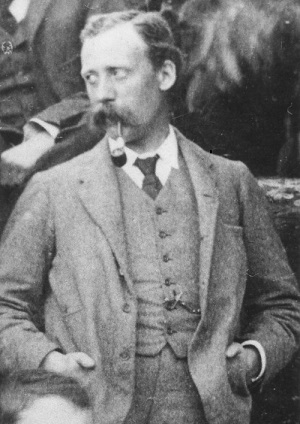
Alexander MacCormick. Demonstrator in Anatomy and Physiology, Lecturer in Surgery, 1893. Reproduced with permission from University of Sydney Archives G3_224_0683.
Sir Alexander MacCormick came to Australia in late 1883, at the invitation of Anderson Stuart, head of the new Medical School at the University of Sydney. Alexander was initially appointed as Demonstrator in Anatomy and Physiology (1883–1885), then, until 1888, a Demonstrator in Physiology and later a Lecturer in Surgery 1890-19145. The extensive experience he gained in dissection as Demonstrator in Anatomy, served as a basis for his later excellence as a surgeon; his position in Physiology, largely concerned with teaching histology, laid the ground-work for his later development as a histopathologist.6
In 1885, he obtained his MD with a gold medal from Edinburgh University for his thesis on the musculature of the Australian native cat (Dasyurus). He had also begun publishing in the Australasian Medical Gazette, and by 1906 had contributed more than 30 articles.
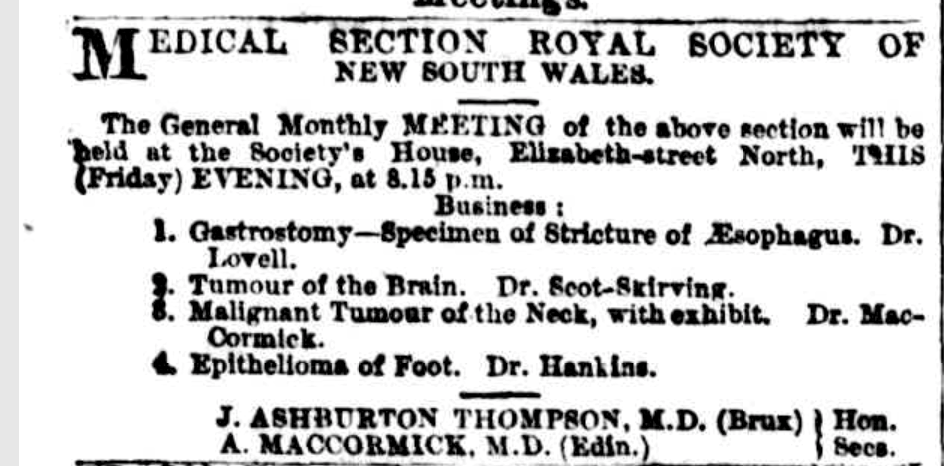
The Sydney Morning Herald, December 17, 1886.p.17
In 1885 MacCormick joined the staff of the Prince Alfred Hospital as Honorary Assistant Surgeon. From the accounts of his contemporaries, although he did not excel as a teacher, being rather taciturn, he was a brilliant surgeon and an outstanding diagnostician, and was recognised beyond Australia, being elected an honorary fellow of the Royal College of Surgeons England in 1900 and the Royal College of Surgeons Edinburgh in 1905 respectively.8 One of his major contributions was to introduce Lister’s antiseptic concepts into the Sydney School9 a development that ‘made possible the development of ‘modern’ surgery’.10 He is said to have been the first surgeon in Sydney to use a white gown while operating, earning him the nickname ‘the Hokey Pokey man’.11 MacCormick was present at the Sydney Hospital in 1896 when X-Rays were first used to remove a bullet from a patient’s thigh.
His excellence as a surgeon was quickly recognised and in 1890, he became a Senior Surgeon at Prince Alfred Hospital and was appointed University Lecturer in the Principles and Practice of Surgery at the University of Sydney. He held these posts until 1914, when he took up an appointment as Honorary Surgeon at St Vincent’s Hospital, until he retired, in 1931, aged 75. According to Skirving, who had also come to Australia in 1883, MacCormick was a man of “inexhaustible energy”, starting at the hospital at 6.30 in the morning, lecturing at the university in the afternoon and returning to the hospital to operate until 8 or 9 at night. Although he managed a large and successful practice, he was also known for his generosity.
Those who knew him well say that though he made a large fortune from his tremendous practice, he never charged a fee which a patient could not afford. He had a big free list, both for his private hospital and as a surgeon’.12
MacCormick was an office-holder of various professional organisations, including President of the New South Wales branch of the British Medical Association in 1905. In 1927 he was appointed as a foundation vice-president of the College of Surgeons of Australasia, a role he held until 193313.
He was also a director of the Australian Mutual Provident Society from 1919-31 and the Bank of New South Wales in 1930-31, president of the Central District Ambulance Committee and an executive-member of the Navy League.
Surgeon and Entrepreneur
In the early 1900s MacCormick poured some of his inexhaustible energy into two major projects – the construction of a medical chambers and residential building in Macquarie Street, Sydney and the conversion of the large Paddington property known as ‘The Terraces’, into a hospital.
Craignish
In 1902-3 MacCormick built a seven storey medical chambers and residential building at 185 Macquarie Street, opposite the NSW parliament building, naming the building Craignish, presumably a reference to a seawater loch, ;Loch Craignish, near his childhood home in North Knapdale, Argyll. The building was designed by the architect John William Manson of Manson and Pickering. The following image appeared in a 1907 issue of Building magazine, and was reproduced forty years later in a retrospective issue of Building and Engineering magazine.
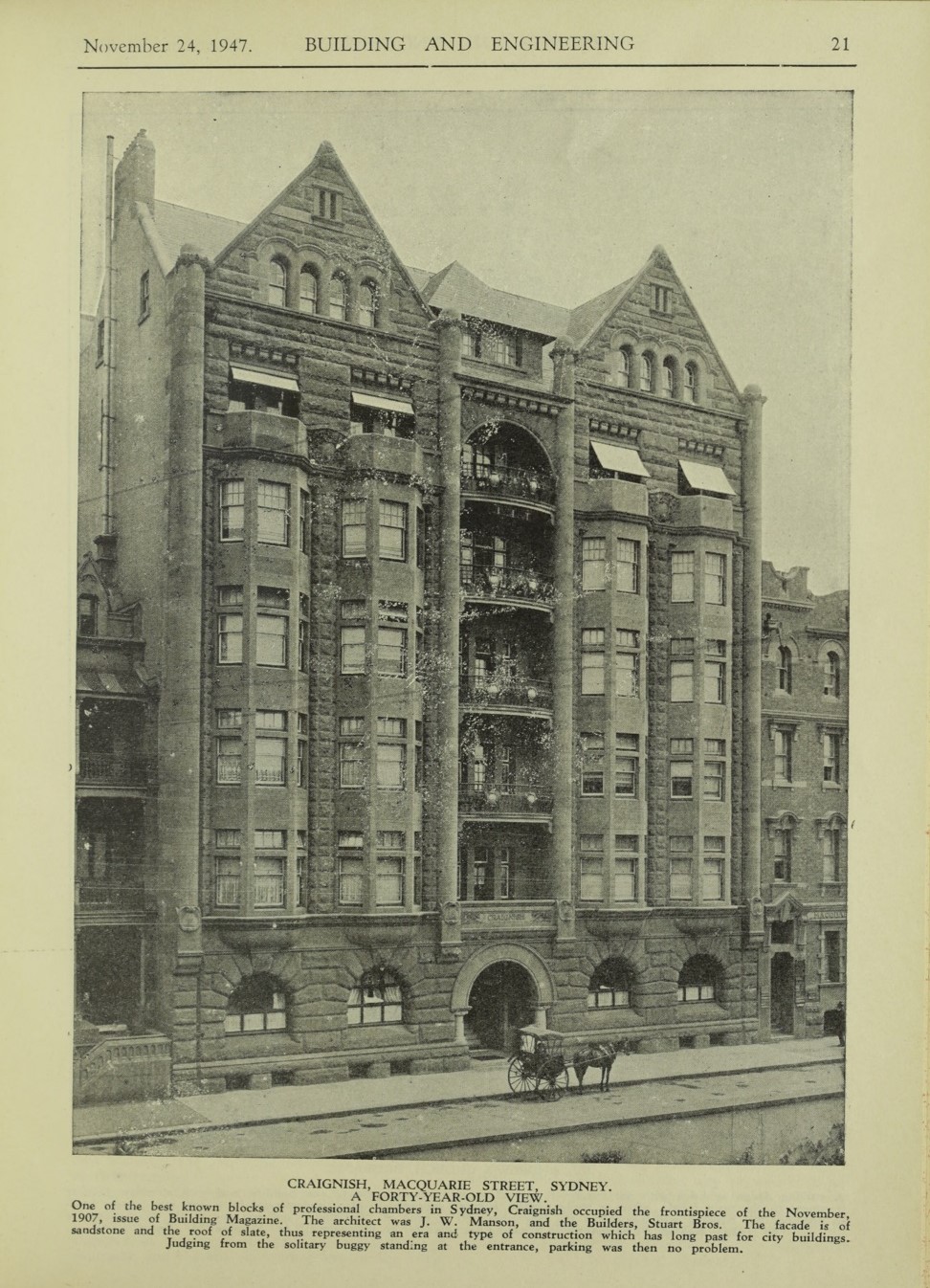
'Craignish, Macquarie Street, Sydney. A forty-year-old view' . From 'Building and Engineering' November 24, 1947 p21.
The caption reads 'One of the best known blocks of professional chambers in Sydney, Craignish occupied the frontispiece of the November, 1907, issue of Building Magazine. The architect was J. W. Manson and the Builders, Stuart Bros. The facade is of sandstone and the roof of slate, thus representing and era and type of construction which has long past for city buildings. Judging from the solitary buggy standing at the entrance, parking was then no problem' 14
The Terraces Private Hospital, 2 Cooper Street, Paddington
In 1901 Dr MacCormick was one of the purchasers of the property ‘The Terraces’, 2 Cooper Street, Paddington, obtained for the purpose of establishing a private hospital. The house had been built c1848-9 for the solicitor Henry Burton Bradley who created the terraced gardens and plantings. Architect George Sydney Jones was commissioned to design the hospital with William Farley carrying out the building work. Jones incorporated the original house into his scheme for the hospital, which was designed in the Arts and Crafts style. The hospital was known to have been well equipped with the latest surgical equipment, and Sir Alexander ‘always kept himself scientifically abreast of the times’.
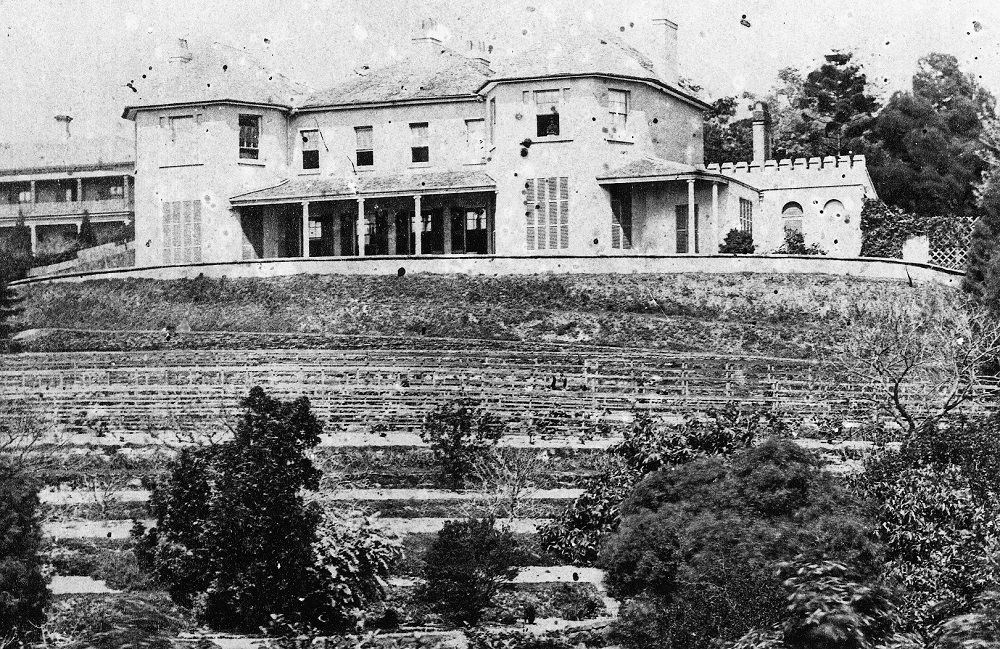
The Terraces, c1866. Mitchell Library, SLNSW.
In 1926, Alexander MacCormick presented the 40-bed hospital The Terraces and its gardens to the Presbyterian Church15 with an endowment of £25,00016 as a memorial to his son Alexander Campbell who was killed in 1916 serving with the Argyll and Sutherlanders regiment in WW1. It was renamed The Scottish Hospital and remained operational until 1998 when the hospital closed. The Ear, Nose and Throat surgeons and the Rehabilitation Unit of the hospital were transferred to the Wolper hospital.
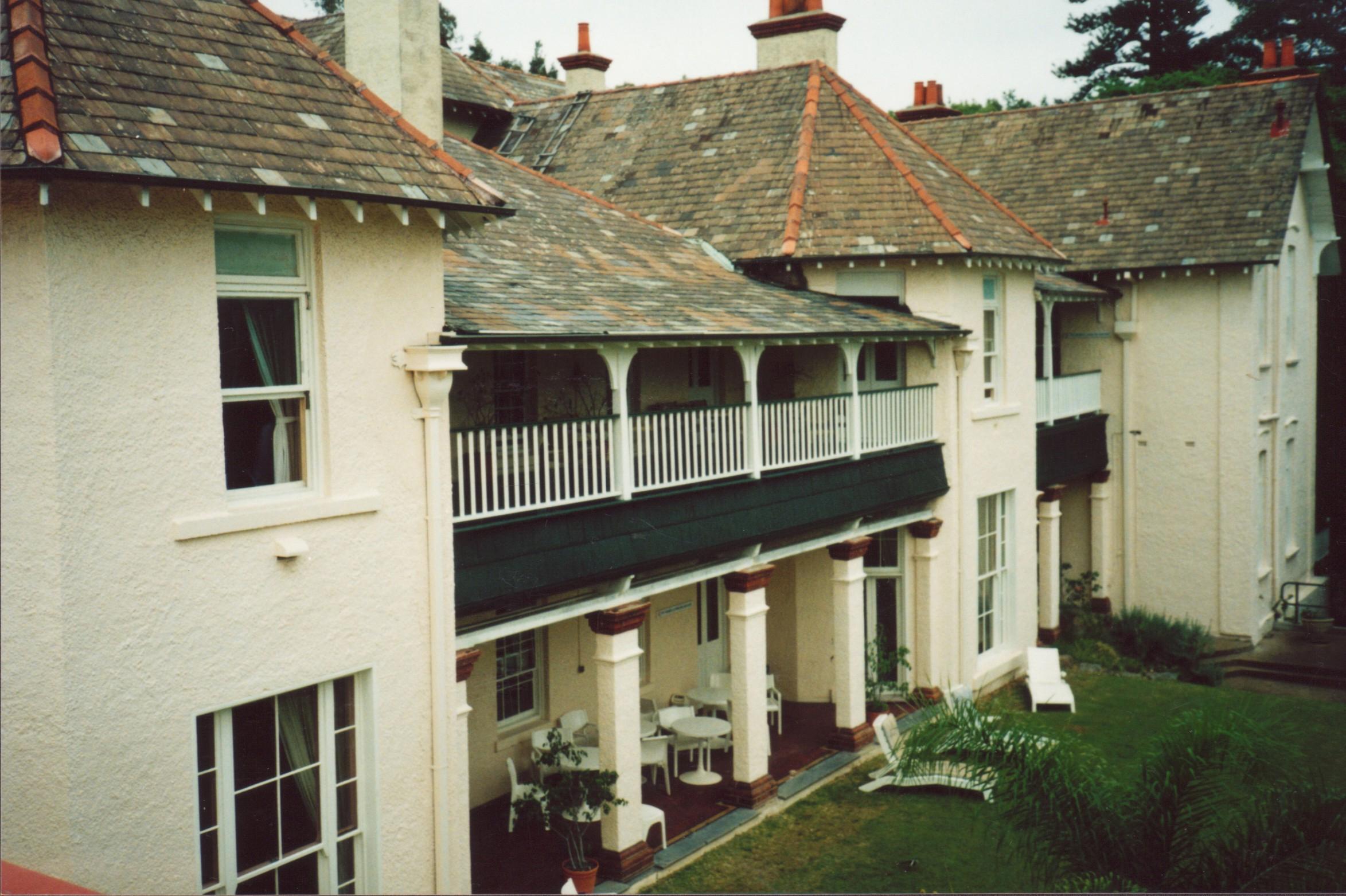
Scottish Hospital and grounds, No. 2 Cooper Street, Paddington. Woollahra Libraries Digital Archive pf004520
The entire site was redeveloped c2019 into a retirement village, now known as The Terraces at Paddington at 74 Brown St, by Presbyterian Aged Care. The Scottish Hospital building was retained and in 2020 converted into 9 Independent Living Units, now known as the Scottish Apartments. The former entrance to The Scottish Hospital on Cooper Street has been retained.
Alexander MacCormick married Ada Fanny Hare (née Cropper), third daughter of Charles Cropper Esq of Yamma, NSW., at All Saints Church, Woollahra on 26 February, 1895.17

NSW Register of Marriages 1895 - Woollahra, NSW
Alexander and Ada had four children - Alison Mary Campbell (b1896), Alexander Campbell (b1897), Charles Malcolm Campbell (b1902) born at 125 Macquarie Street, Sydney (The Astor), and Morna Campbell (b1906) at 185 Macquarie Street (Craignish)18.
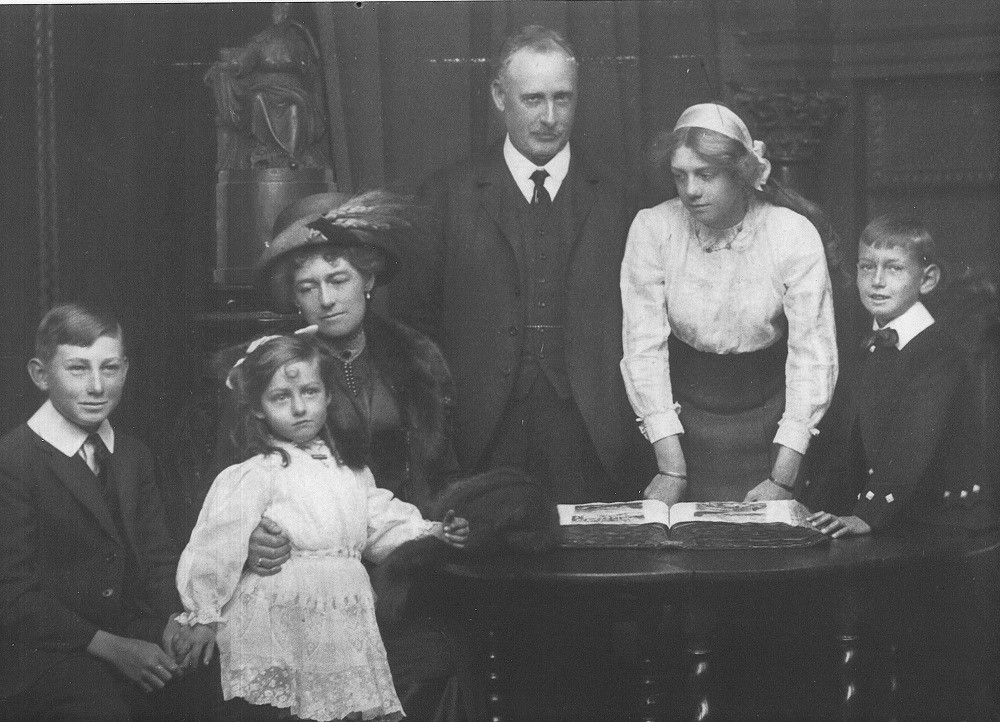
Sir Alexander and Lady MacCormick and family c1910. L-R: Alexander, Morna, Lady MacCormick, Sir Alexander, Alison, and Charles. Woollahra Libraries Digital Archive [pf008463]
Sir Alexander and Lady MacCormick's eldest son Alexander Campbell MacCormick was killed in action in 1916 at Loos, France, where he was serving as a lieutenant in the Argyll and Sutherland Highlanders. He was just 19 years old.

Family Notices (1916, October 16). The Daily Telegraph
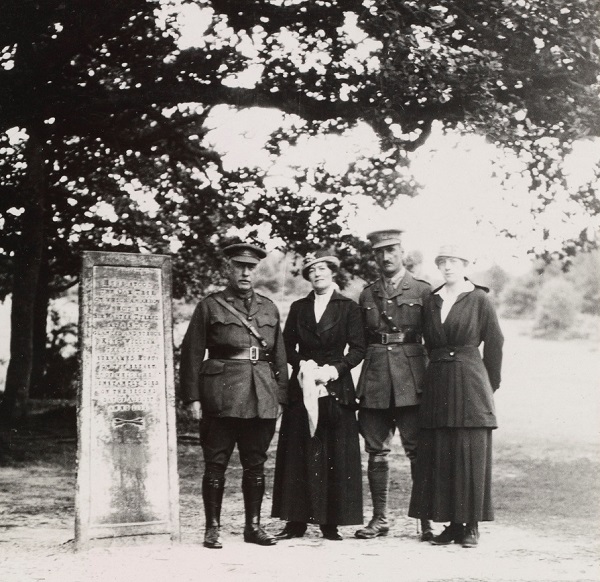
'June 1915 King Rufus' Stone, New Forest [UK] - Sir Alexander MacCormick, Lady MacCormick, Mr Cropper, Miss MacCormick'. Image from: Dr. Herschel Harris war photographs in France and Lemnos SLNSW PXA 403
Kilmory, 6 Wentworth Street, Point Piper
In 1898 Dr. MacCormick purchased Lots 15, 16 17 and 18 of Section 3 of the Point Piper Estate subdivision at Point Piper, at the junction of Wentworth Street and Hill Street, for £2,465. He later sold Lots 15 and part of Lot 16 and in 1909 converted Lots 17, 18 and the remainder of Lot 16 to one title19.
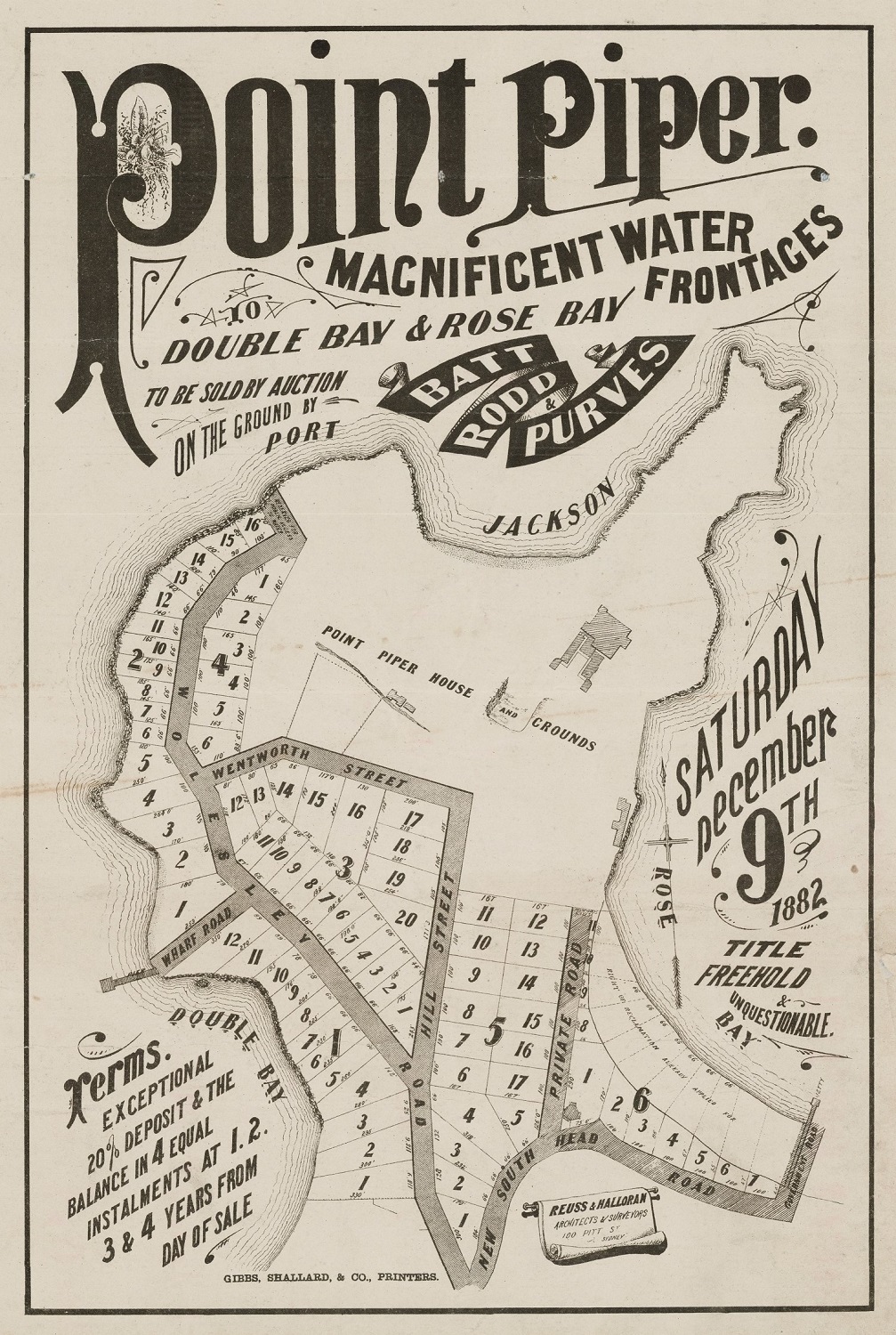
Point Piper Subdivision plan - Wentworth St, Wolesley Rd, New South Head Rd, 1882 SLNSW Z/SP/P14/20
MacCormick commissioned the architects Manson and Pickering to design a house for the site facing Wentworth Street, and an application to build was lodged with Woollahra Council on 28th April c191320 with an estimated cost of £10,700. James Manson, a distinguished architect of the Edwardian period in Sydney, designed the building in the Arts and Crafts style, with timber panelling and built-in furniture a feature. The builder for the project was Stuart Bros. The house at 6 Wentworth Street is first recorded in the Woollahra Council rate and valuation books and in the Sands Sydney Directories in 1915 suggesting it was completed during 1914. The house was one of the most prominent in the area and a great interest locally21. In an apparent link to his Scottish heritage, MacCormick named the house Kilmory [Kilmory Castle, a 19th century building, now the Argyll and Bute Council headquarters and Kilmory Oib, a deserted medieval village, are located near Lochilpead where a young Alexander went to school].
MacCormick was abroad for much of the war, but finally returned to live at Kilmory in 1918. Nesta Griffiths, in her book Point Piper, Past and Present, notes that
Kilmory ...was the scene of many lovely dances and much entertainment. The big ballroom, half panelled, had a collection of Toby jugs on the shelves and the house was full of beautiful furniture collected by Mr C Cropper, Lady MacCormick’s brother, who was a great connoisseur. When the eldest daughter married, a house was built opposite for her and her husband in 1929. Alexander MacCormick and his wife lived at Kilmory until 1931, when, at the age of 75, he retired completely and sailed to the Channel Islands'.
Kilmory was transferred to MacCormick’s company Craignish Ltd c1934. During the Second World War, from 1942, Kilmory, sitting on top of the Point, became the Eastern Area Headquarters for the RAAF. Following the War, in 1946, Kilmory was transferred to the Trustees of the Jesuit Fathers and used as the Preparatory School for Riverview College. The College renamed the house Campion House. In 1954 the property was transferred to the Trustees of the Franciscan Missionary of Mary who in 1955 converted the property for use as a Retreat House and Convent. The Trustees offered the property for sale in 1998 and at the time it consisted of the Main Building with conference facilities, offices, chapel [originally the ballroom], library and accommodation; Retreat House with accommodation; the Old Convent Building and the original Stables. It has now been converted into apartments.
Kilmory Photo Gallery
From an album of photographs titled 'Kilmory' by photographer C W Bostock. Reproduced, with permission, from a private collection.
Sir Alexander MacCormick served as a consulting surgeon (with the honorary rank of Major). in the South African War of 1899-1902, as a ‘colonial volunteer’, working under the auspices of the Royal Army Medical Corps from January 1900, along with five other surgeons from NSW. He was mentioned in dispatches in September 1901 and awarded a Queens Medal.22
Following the outbreak of WW1 he joined the British Expeditionary Force in late 1914 - as a Colonel and consulting surgeon - and was later commissioned in the Australian Army Medical Corps and sent to Lemnos, 'where from July to October he was senior surgeon of No. 3 Australian General Hospital at Mudros' (Sydney Morning Herald, 3 July 2022) although he said he was 'unable to do any operating at all'.
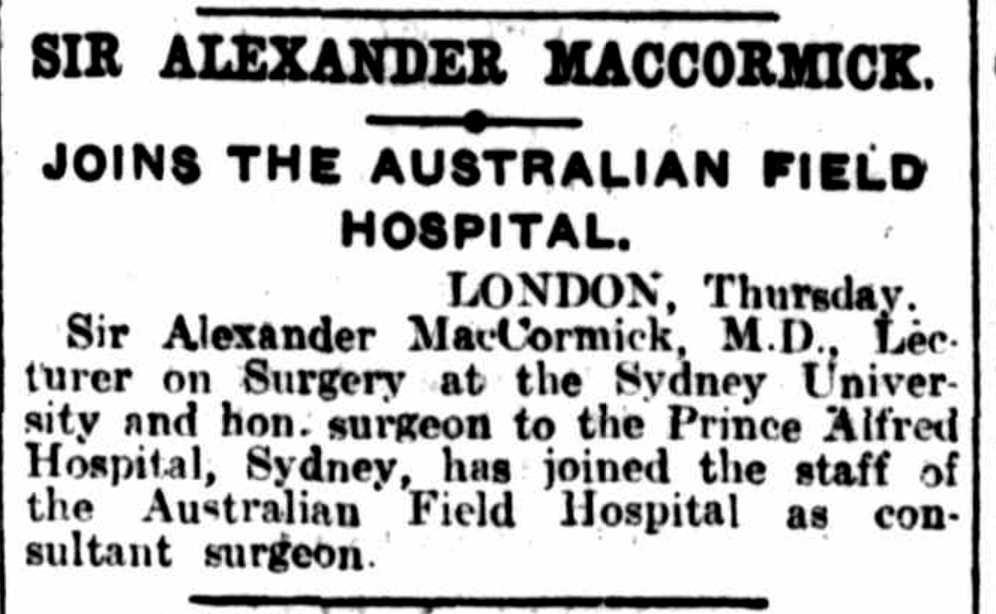
The Brisbane Courier, December 5, 1914. p. 5.
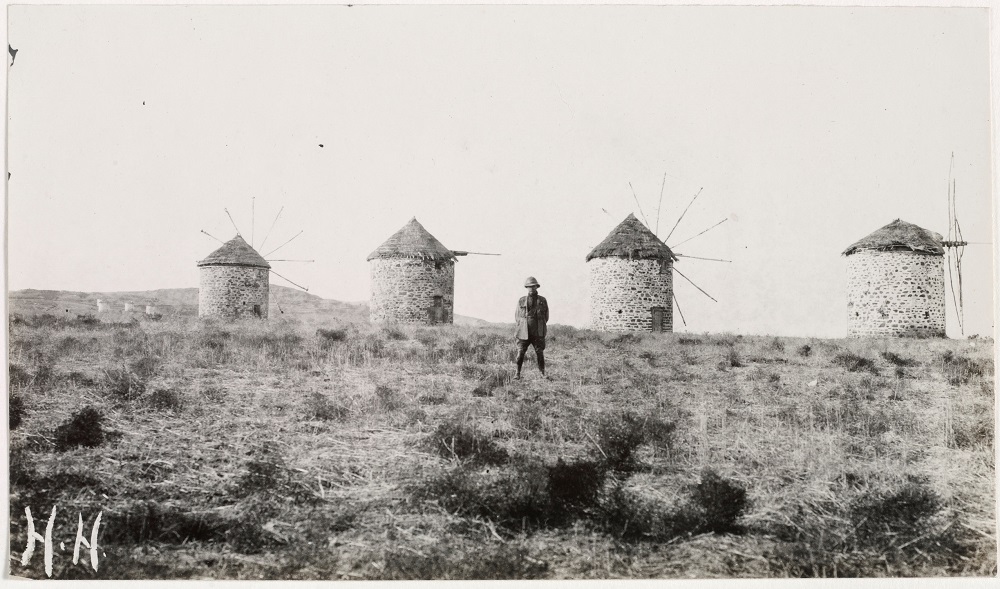
'Lemnos 1915, group of mills not in action, Sir Alexander MacCormick in foreground'. Image from: Dr. Herschel Harris war photographs in France and Lemnos SLNSW PXA 403.
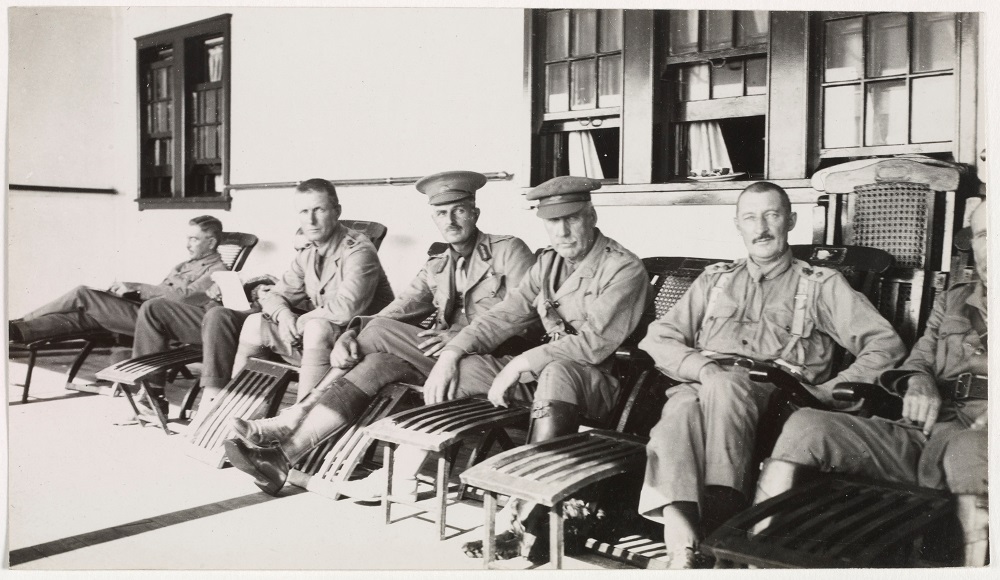
Mudros Harbour 1915 - group of officers taken on the `Transilvania'. These officers were transferred from the `Southland' after she had been torpedoed outside Lemnos. L-R: unknown officer, Col. Millard, General Legge, Sir Alexander MacCormick, Queensland officer. Image from: Dr. Herschel Harris war photographs in France and Lemnos SLNSW PXA 403.
It was noted in the Official history of the Australian Army Medical Service in the war of 1914-18 that
‘The most celebrated operating surgeon that Australia has produced, who more than any other man has influenced the technical interest, Sir Alexander MacCormick, went to England about the outbreak of war and was early appointed Consulting Surgeon to the B.E.F. base at Boulogne. He took with him to France a supply of Thomas splints. In February, 1915, he urged their use in the front lines. Soon after he was transferred with No. 3 A.G.H. to Lemnos where his unsurpassed surgical genius was wasted’.23
Frustrated, MacCormick returned to Sydney in February 1916 but after the death of his eldest son in October 2016 he rejoined the A.I.F. in May 1917: in France his talents were again largely wasted. Back in Sydney in February 1918, he became a consultant at Prince Henry Hospital and the Military Hospital, Randwick.24
Sailing Surgeon
A notable yachtsman, MacCormick served as commodore of the Royal Sydney Yacht Squadron, and was a founder and first Commodore of the Royal Prince Edward Yacht Club, Point Piper.25
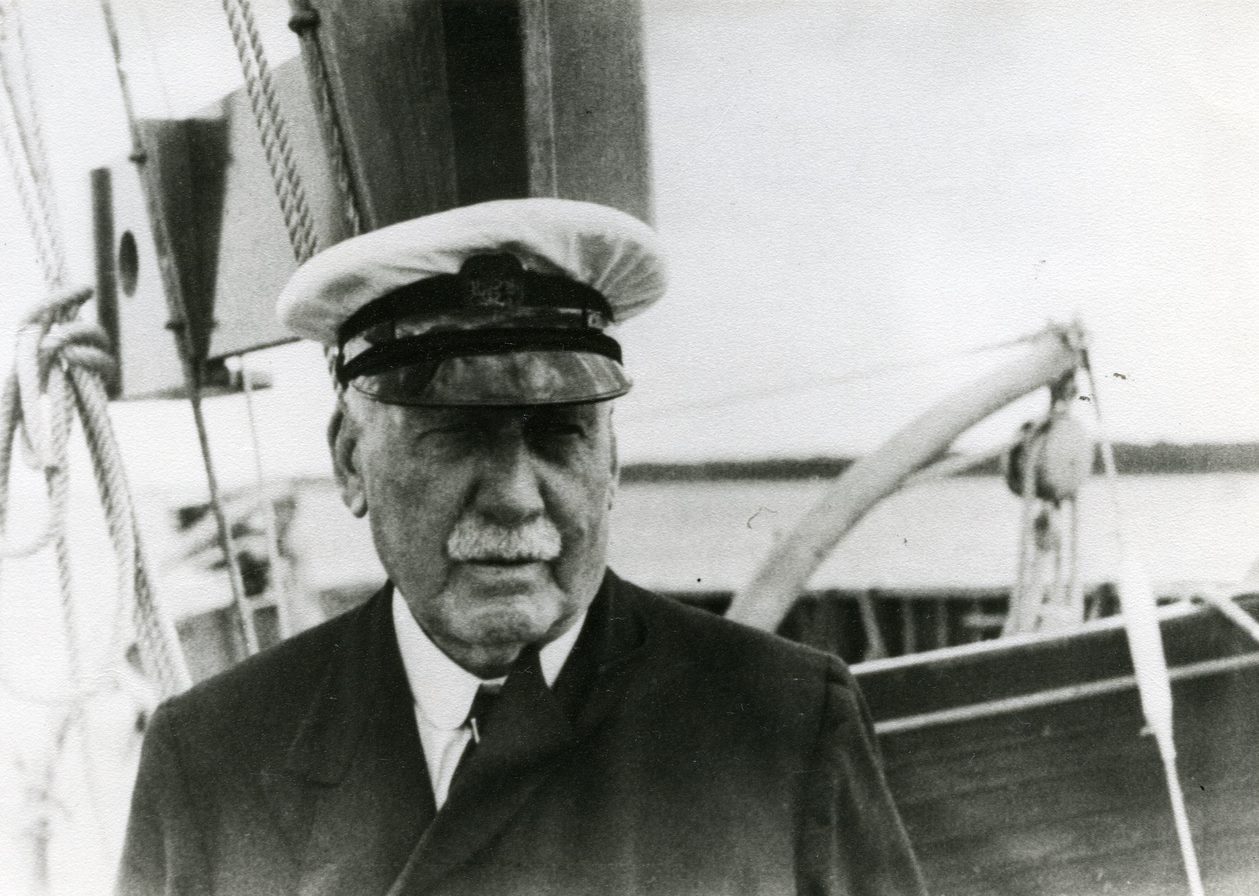
'Sir Alexander MacCormick on board his yacht Ada prior to sailing it from England to Australia in 1927'. Reproduced with permission from the Royal Australasian College of Surgeons.
MacCormick’s fellow student from Edinburgh University, Robert Scot Skirving, who had also arrived in Sydney in 1883 under Anderson Stuart’s patronage, shared with MacCormick a passion for the sea. By the time they arrived in Sydney, sailing was already a popular sport and sailing regattas were an established feature of Sydney society.
He loved the sea, but it was, of course, mostly the sea with little ships upon it. If MacCormick had been a sailor in the great days of sail, what a master of a China Clipper he would have made! I cannot imagine anyone having more the makings of a great practical seaman than MacCormick.
In 1893, MacCormick joined the Royal Sydney Yacht Squadron and purchased the yacht, Thelma. In 1897 he was appointed Commodore of the Royal Sydney Yacht Squadron. The opening of the 1897 season was reported in the Sydney Morning Herald, the article providing a detailed description of the manoeuvres undertaken by the squadron of 18 vessels, including four steam yachts which acted as convoys to the sailing fleet, 'directed by the commodore by means of signals which were exhibited on the Thelma'.
The commodore (Dr MacCormick) had in contemplation some manoeuvres which enabled the spectators to realise to some extent at least why yachting is, especially amongst those devoted to it, so fascinating a pastime...The commodore had at his command a fleet which was worthy alike of the harbour and the Royal Sydney Yacht Squadron and the presence of which was a tribute to his popularity as its commander.
'The Yachting Season. Inaugural Evolutions by the
"Royals." A Successful Demonstration'
The Sydney Morning Herald, 1897, October 18, 1897, p. 3.
He relinquished his position as Commodore in 1900 when he and Skirving served as surgeons in the South African War.
MacCormick continued his ongoing love of yachts, selling Thelma in 1906 to Charles Lloyd Jones and commissioning Morna, ‘an elegant fast yacht named after his youngest daughter’. Morna was designed by Mr William Fife of Fairlie, Scotland and built in 1913 by Morrison and Sinclair, Balmain. Morna was later owned by Frank Packer and Sir Claude Plowman26.
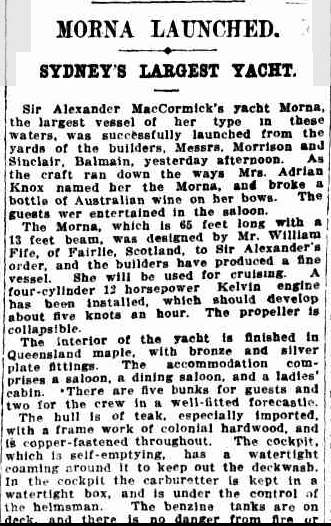
The Sydney Morning Herald, August 29, 1913. p. 726
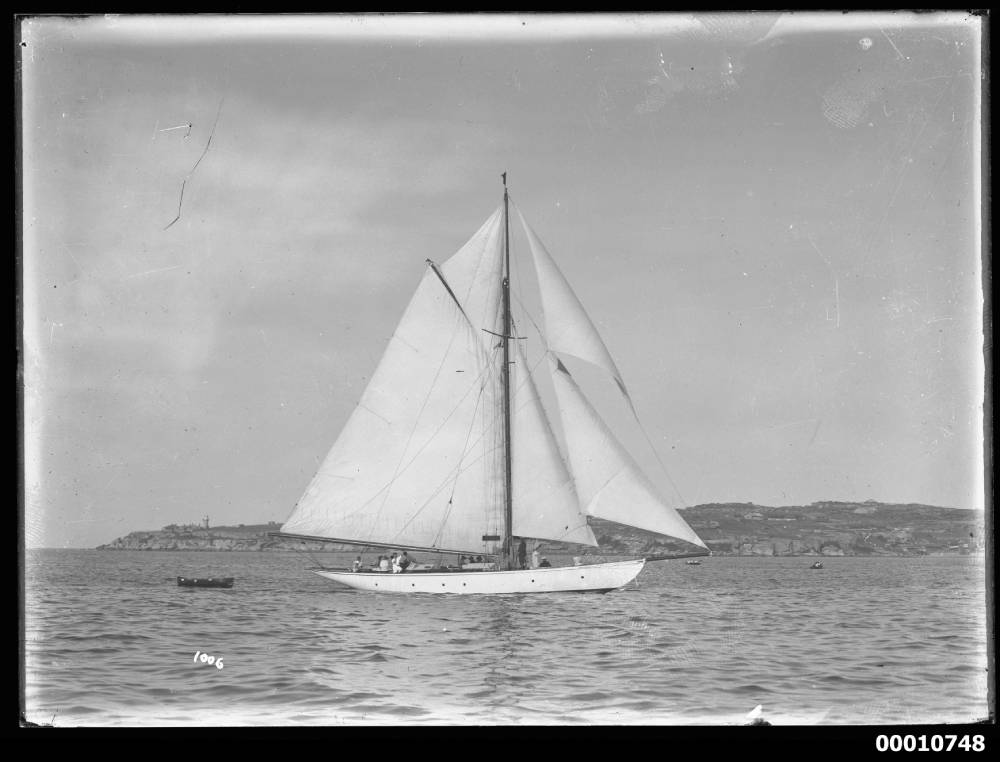
Yacht Morna sailing on Sydney Harbour [South Head and Hornby Light behind]. Australian National Maritime Museum William Hall collection. Object number: 00010748.
In 1913, Alexander MacCormick again became Commodore of the Royal Sydney Yacht Squadron, a position he retained until after he returned from his war service with the Australian Army Medical Corps. In 1920 he left the Yacht Squadron to become first Commodore of the newly formed Royal Prince Edward Yacht Club.
In 1924, he commissioned his third yacht, Ada, which was designed and built in the UK by well known yacht builder William Fife III. In September 1927, MacCormick, who was then 71, set off for Australia with a skeleton crew including Mr Neville Dangar of Sydney, Commander H F Nash, late R.N.R. as navigator, and crew members Gibb, Wisby and Bunker. They sailed through the Panama Canal and had an apparently uneventful voyage, other than sitting out a cyclone off Fiji, and on arrival in Rose Bay, Sydney, four months later, they remarked how well the Ada performed at sea in all conditions27. Reports of the yacht's remarkable '14,000 mile' journey were carried in the national newspapers27. The yacht was renamed Astor by subsequent owners. 27
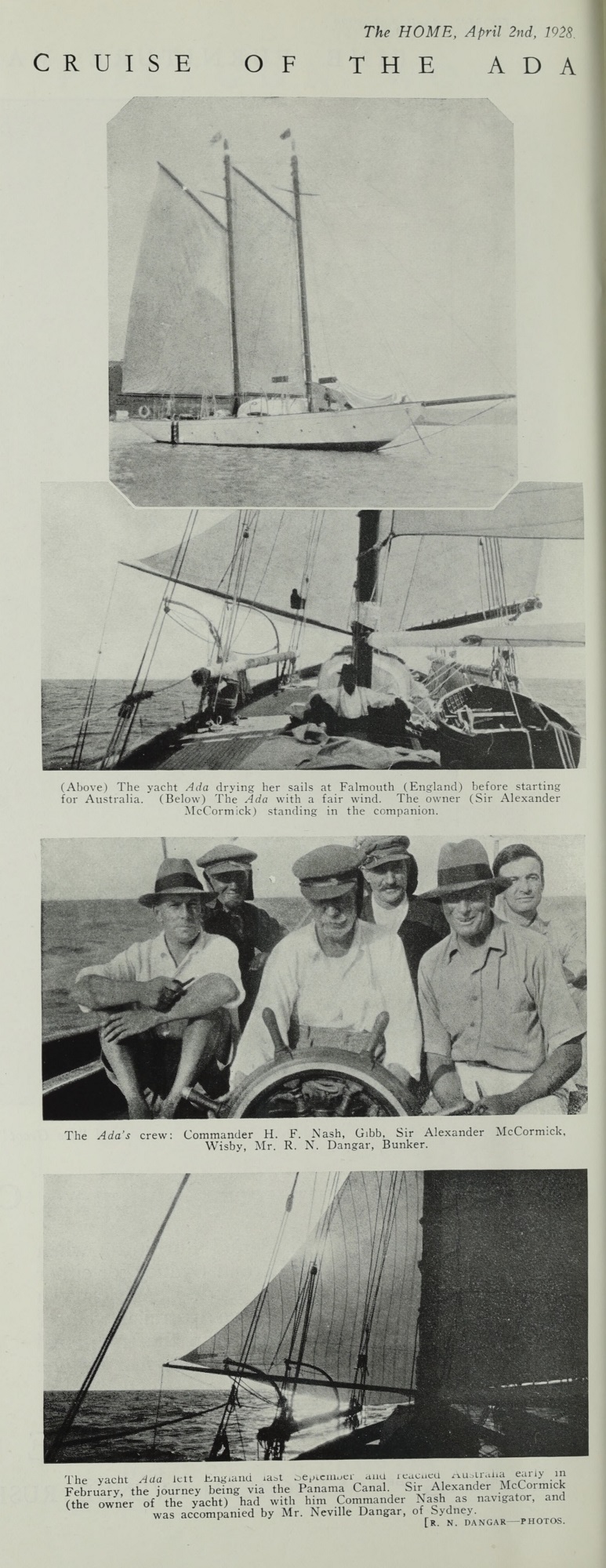
'Cruise of the Ada'. The Home : an Australian quarterly 2 April 1928, Vol. 9 No. 428
Alexander MacCormick was recognised for his contributions in the field of medicine in Australia with the award of Imperial Honours in 191329, when he was made a Knight Bachelor (Imperial) for ‘services to medicine in New South Wales’30, later becoming a Knight Grand Cross of the Order of St Michael and St George (KCMG) (Imperial) in 1926 with the citation ‘a leading surgeon’31.
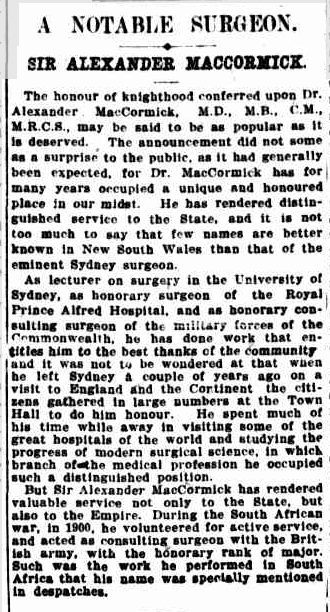
The Sydney Morning Herald June 4, 191332
Legacy
Sir Alexander MacCormick ‘returned to Australia for a few months in 1935 and attended a valedictory dinner given in his honour by Sir Herbert Schlink, at which Scot Skirving was the principal speaker. It was Sir Alexander’s farewell to the profession in Australia as shortly afterwards, he returned to Jersey’. In his memoirs, Scot Skirving wrote:
He [Alexander MacCormick] showed what it is possible for a man with perfect nerves, great shrewdness of judgement, a practical knowledge of anatomy, and wonderful dexterity of hands, to do in surgery. He thus gave to generations of surgery a model to follow. Surgery in Australia is, in my judgement, deeply indebted to Alexander MacCormick.
Memoirs of Dr Robert Scot Skirving, 1859-1956, Ch 12, p160
He remained in Jersey until his death in 1947 at the age of 91, with but a brief interruption during the war - he escaped from Jersey in his yacht, only hours before the Nazis arrived. This account makes dramatic reading and is a tale worthy of this rather remarkable man’33
Alexander McCormick’s death at age 91, on 25 October 1947, St Brelade, Jersey was reported widely in the national newspapers where he was described as a ‘word-famous surgeon’ and ‘a giant figure in Australian surgery for more than half a century and a notable yachtsman. He rapidly built up a distinguished reputation for surgical skill, and the high standard of Australian surgery was largely due to his influence.’34. Dr Douglas Miller, who knew him well, said
Up until the time time of Sir Alexander's retirement from practice he was the unchallenged leader of the profession. He travelled regularly, kept abreast of all developments in surgery, kept his mind fresh and young. He never followed in the wake of his own reputation34
Griffiths, G. Nesta. Point Piper, Past and Present, Sydney : Ure Smith, 1970
Mellor, Lise, MacCormick, Sir Alexander, Faculty of Medicine Online Museum and Archive, University of Sydney, 2008
Miller, Douglas, MacCormick, Sir Alexander (1856–1947), Australian Dictionary of Biography
Royal Australian College of Surgeons (website) and Surgical News [Journal of the RACS]
Scot Skirving, R. (Robert), Macintosh, Ann (ed.). Memoirs of Dr Robert Scot Skirving, 1859-1956, Foreland Press, 1988.
Archival, manuscript, etc
Archival resources of Woollahra Council - Woollahra Council Records - including Building Registers; Rate, Assessment and Valuation books.
NBRS+Partners, 'Conservation Management Plan. The Scottish Hospital, 2 Cooper Street, Paddington NSW 2021'. Issued June 2006, Amended and re-issued 10th November 2010. Woollahra Libraries Local History collection.
NLA Trove data base - Newspapers
NSW BDM NSW online index
Sands Sydney Directory
Wentworth Street, Point Piper, No. 6 Kilmory. Woollahra Local History Research File, 2004.
Notes
1 Mellor, Lise (2008) MacCormick, Sir Alexander. Faculty of Medicine Online Museum and Archive, University of Sydney.
2 Scottish Census 1861 Parish: North Knapdale, [Ancestry.com].
3 Membership Examination of the Surgical Royal Colleges of Great Britain and Ireland.
4 Scottish Census 1881
5 ‘World-famous Surgeon, Sir Alexander MacCormick, Dies At 91’. The Sydney Morning Herald October 27, 1947, p. 4. http://nla.gov.au/nla.news-article18038094
6 Mellor, Lise
7 Advertising The Sydney Morning Herald, 1886, December 17, 1886.p. 12. http://nla.gov.au/nla.news-article28352454
8 Miller, Douglas, MacCormick, Sir Alexander (1856–1947), Australian Dictionary of Biography https://adb.anu.edu.au/biography/maccormick-sir-alexander-7322
9 Mellor, Lise
10 ‘World-famous Surgeon, Sir Alexander MacCormick, Dies At 91’. The Sydney Morning Herald October 27, 1947, p. 4
11 Miller, Douglas
12 ‘World-famous Surgeon, Sir Alexander MacCormick, Dies At 91’. The Sydney Morning Herald October 27, 1947, p. 4
13 “Past Office Bearers”, Royal Australian College of Surgeons from https://www.surgeons.org/about-racs/about-the-college-of-surgeons/our-heritage-archives/past-office-bearers
14 'Craignish, Macquarie Street, Sydney. A forty-year-old view'. Building and Engineering Issue 11 November 24, 1947. https://trove.nla.gov.au/work/233359912. 'See also ‘Sydney Street Architecture’ Art and architecture : the journal of the Institute of Architects of New South Wales http://nla.gov.au/nla.obj-863270429
15 ‘The Terraces. For a Hospital. Munificent Gift’ The Sydney Morning Herald, May 20, 1926 p. 8. http://nla.gov.au/nla.news-article16293407. See NBRS+Partners, 'Conservation Management Plan. The Scottish Hospital, 2 Cooper Street, Paddington NSW 2021' pp
16 Miller, Douglas
17 ‘Family Notices’ The Sydney Morning Herald, March 13, 1895 p. 1; . Retrieved September 18, 2021, from http://nla.gov.au/nla.news-article13982090
18 ‘Family Notices’ The Sydney Morning Herald October 18, 1906 http://nla.gov.au/nla.news-article14825550 ; ‘Family Notices’ The Sydney Morning Herald, December 6, 1895, p. 1. http://nla.gov.au/nla.news-article14027792 ; ‘Family Notices’ The Sydney Mail and New South Wales Advertiser, July 31, 1897 p. 257 http://nla.gov.au/nla.news-article163796342 ; ‘Family Notices’ The Sydney Morning Herald, July 19, 1902 p. 1. http://nla.gov.au/nla.news-page1339804
19 Wentworth Street, Point Piper, No. 6 Kilmory. Woollahra Local History Research File
20 Building Application BA85/1913 Woollahra Council Register of Building Applications 1913 p 27
21 Griffiths, G. Nesta. Point Piper, Past and Present, Sydney : Ure Smith, 1970 p 95
22 Milford, Elizabeth. “Surgeons of the Boer War”, Surgical News[Journal of the RACS], July 2016, p 48; 'Personal Notes. Sir Alexander MacCormick'. The Sydney Morning Herald 3 July 1926, p16. http://nla.gov.au/nla.news-article16303206
23 Butler, A. G. (1938). The official history of the Australian Army Medical Service in the war of 1914-18 / [A.G. Butler]. Vol III, Section 1 Chapter V - The Scientific Background of Army Medicine in the War. Melbourne: Australian War Memorial.
24 Miller, Douglas
25 Milford, Elizabeth. “Sailing Surgeons”, Surgical News [Journal of the RACS], March 2013 p 36-38 and RPEYC website https://www.rpeyc.com.au/history-heritage/
26 ‘Morna Launched’. The Sydney Morning Herald, August 29, 1913. p. 7. http://nla.gov.au/nla.news-article15446332 and Australian National Maritime Museum on Flikr https://www.flickr.com/photos/anmm_thecommons/8656379411
27 'Yacht ADA'. The Sydney Morning Herald, September 24, 1927 p. 15. http://nla.gov.au/nla.news-article16406329 ; '14,000 Miles' Trip in 60-ton Schooner Yacht', The Daily Telegraph 1928, January 30, p. 2. http://nla.gov.au/nla.news-article245502720 ; 'An Interview with Sir Alexander MacCormick. Faith in the Ada' . The Sydney Morning Herald, January 30, 1928 p. 11. http://nla.gov.au/nla.news-article16437836; 'Astor’ Australian Register Of Historic Vessels, Australian National Maritime Museum https://arhv.sea.museum/en/collections
28 Cruise of the Ada (1920). The Home : an Australian quarterly http://nla.gov.au/nla.obj-382395681
29 “A Notable Surgeon”, The Sydney Morning Herald, June 4, 1913, p. 14. http://nla.gov.au/nla.news-article15424706
30 “Col Sir Alexander MacCormick”, Australian Honours Search Facility, Department of Prime Minister and Cabinet from https://honours.pmc.gov.au/honours/awards/1082889
31 “Col Sir Alexander MacCormick”, Australian Honours Search Facility, Department of Prime Minister and Cabinet from https://honours.pmc.gov.au/honours/awards/1082622
32 ‘A Notable Surgeon’. The Sydney Morning Herald, June 4, 1913 p. 14. http://nla.gov.au/nla.news-article15424706
33 Mellor, Lise
34 World-famous Surgeon, Sir Alexander MacCormick, Dies At 91 The Sydney Morning Herald, October 27, 1947 p. 4.
New plaques are added based on nominations from the community, which are then assessed against selection criteria and researched by a Local History Librarian.
Find out more and nominate a person or event for a plaque.